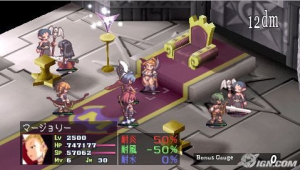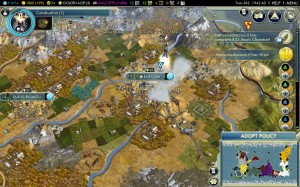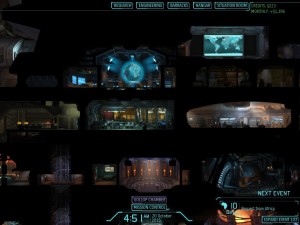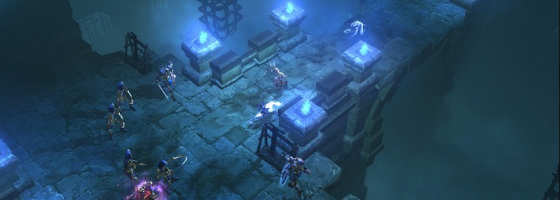Mastery of a game comes in many forms based on the genre. But one of the more debated forms comes with the phrase min/max. For the player, it means that the game has been broken down and no mysteries remain. But for a designer trying to create a replayable or lengthy experience, it means that there is nothing more to be discovered.
Playing a video game at this level can be viewed either as the best way or the worst and is something that designers need to take into consideration.
Paying Attention to the Man Behind The Curtain:
Min/Max is a form of playing a game that focuses on the most optimal way of playing. It’s commonly seen in either games built around hard numbers like RPGs, or those made up of multiple systems like strategy games.
What happens is that by breaking the game down to such a point of focus, someone can pick out the best ways of playing a game and figure out the perfect strategy or build for victory. If you ever played a PvP game or MMO, you’ve probably seen guides online for the absolute best ways to build characters or classes certain ways, which is a perfect example of min/maxing.
This is essentially expert level play as it requires a perfect understanding of the game’s mechanics and systems to pull off, but once it’s achieved the game is no longer a challenge. Once you understand how the mechanics function and how the AI will respond, the game for all intents and purposes is broken.
There are two sides to the use of min/maxing and whether the player should be able to do it. First, there are people who see it as ruining the experience of the game. When you reach the point that you are min/maxing, you’re not “playing” the game in the sense that you are invested in the experience. At this level, it’s more about the calculations and systems as opposed to gut feelings.
To put it another way, it’s like comparing someone who can only see the trees in the forest, as opposed to someone with a bird’s eye view.
If you know that the AI will react as X when you do Y, then you can exploit that to be two steps ahead at all times. With RPGs, it’s about picking the best equipment, characters and skills down to their decimal point values for the absolute best bang for your buck.

Disgaea was one of only a few games where mastering the mechanics is meant to build towards the end game while breaking the normal content.
And for some people, they feel that playing video games this mechanically ruins the spirit of the game.
But on the other side of the debate, the supporters say that they’re enjoying the game, but from a different understanding.
To them, it’s like taking apart your toys to figure out how they work and putting them back together again as opposed to playing with them. They’re still enjoying the games, but proving their mastery of the experience.
And in some cases, the designer may reward the player for playing this way. The Disgaea series by Nis America famously features a multitude of post game challenges and systems meant to be exploited by the players who want more. By using these systems, the player will absolutely break the main story content. However, that becomes mandatory for those looking to take on the post game battles.
For example, a typical final boss in a Disgaea game is usually around level 100 on the leveling curve, while post game challenges feature enemies in the thousands range. With a final, final, final, final fight typically with a level 9999 boss.
While Nis America enjoys designing their games in such a way, for other designers the act of min/maxing is the worst case scenario as it is someone picking apart your game design. As mentioned for strategy games, once someone figures out the best way of playing, it signifies the end of being challenged by the game.

Strategy games suffer the most from game mastery being achieved too quickly. As its hard to find a predictable game replayable.
This is similar to the now coined expression: The Chick Parabola and how the more you come to understand a game’s systems, the less enjoyment you get out of knowing how everything works.
What’s worse is if you are trying to develop a competitive game, as once someone finds that there is a perfect way to play it, the game will lose all of its charm.
Given enough time, almost any game can be understood to the point of min/max mastery, but there are ways for designers to delay it for as long as possible.
Fluctuating Content:
Keeping your game unpredictable is one of the biggest challenges of any game designer and there are several things to help keep people guessing.
First is simply put, the more constants in your game, the easier it is for people to pick up on the best ways to play. For every set piece of equipment, starting point, skill selection and so on, gives the player an understanding of the framework of the game.
For someone like me who spends his days analyzing game design, I’ve gotten very good at picking up optimal strategies and tactics in gameplay.
This is one of the main problems I’ve talked about with Enemy Unknown, as the set skills, campaign and map design makes the game predictable. The map design was a constant complaint by hardcore fans of the game as set maps means set enemy spawns, allowing someone to know where enemies are located before they even start searching.
With the set campaign structure, it’s easy to figure out what facilities to focus on for optimal production and funding. And someone can easily make plans early on to make the mid to late game very easy. On the other hand, a set campaign also meant that it was easy to know when you were falling behind and find things frustrating enough to want to give up playing.
The set design of Enemy Unknown and Enemy Within is why I like to further handicap myself by playing with the second wave options turned on to inject some randomness into the gameplay. While it makes the game a lot harder and I still haven’t won an ironman game yet, it helps things from becoming too set in their ways.

Enemy Unknown’s simplified base building combined with a linear campaign structure, made it easy to figure out the most optimal way around the strategic layer
Another thing that designers can do to keep their games unpredictable is to restrict information or in other words, keep the player from seeing hard numbers.
Instead of giving numerical data to the player for equipment, you could say that weapon damage is light, medium, heavy and so on. The hard numbers are left on the coding side and the player gets the descriptions.
Now there is a risk in doing this, as the more you hide from the player, the harder it becomes to learn a game. Games based around multiple systems of mechanics like 4X games, hard numbers are important for the player to be able to make informed decisions about what to do. If playing the game becomes too much of a mystery than the player will become frustrated and give up.
Lastly and the vaguest suggestion: Add as much randomness as possible. Now this is most likely possible in narrative-less games like strategy titles or rogue-likeish types. But as mentioned, the less set elements in your game, the harder it is for someone to pick up on the best ways to play.
However there is a problem with too much randomness and difficulty. If the game becomes so random that the player has very little control over their chance at winning, then the game can become incredibly frustrating to play.
For example, one of the common strategies in Enemy Unknown at classic and impossible difficulties is the use of heavy units and their rocket launchers early on to compensate for enemies with longer ranged attacks and accuracy. But if the player doesn’t get lucky and can’t get several heavies to take onto missions, it can be like a grab bag if the player has any shot at surviving the early stages of the game.
Playing a game at the level of min/maxing is less about the “experience” in the sense that you are being engaged by the story, but more about seeing the numbers and how the game was designed. And depending on who you are, you could see this as the ultimate goal to reach or the signal that the game is done.
For me, I’m not a fan of min/maxing even though I can pick out optimal strategies very easily. Once you start breaking the game down in that manner, the temptation to keep going and just completely dominate the game is great. Much like if you start reading a hint guide for one section and feel the urge to keep reading to see what you need to do.
Understanding where Min/Max mastery fits into your game is dependent on the type of game you’re making. Not every game has to be designed for hundreds of hours of enjoyment. But generally speaking, it’s better to keep the game design fresh for as long as possible as once you lose someone’s interest, it’s gone for good.


